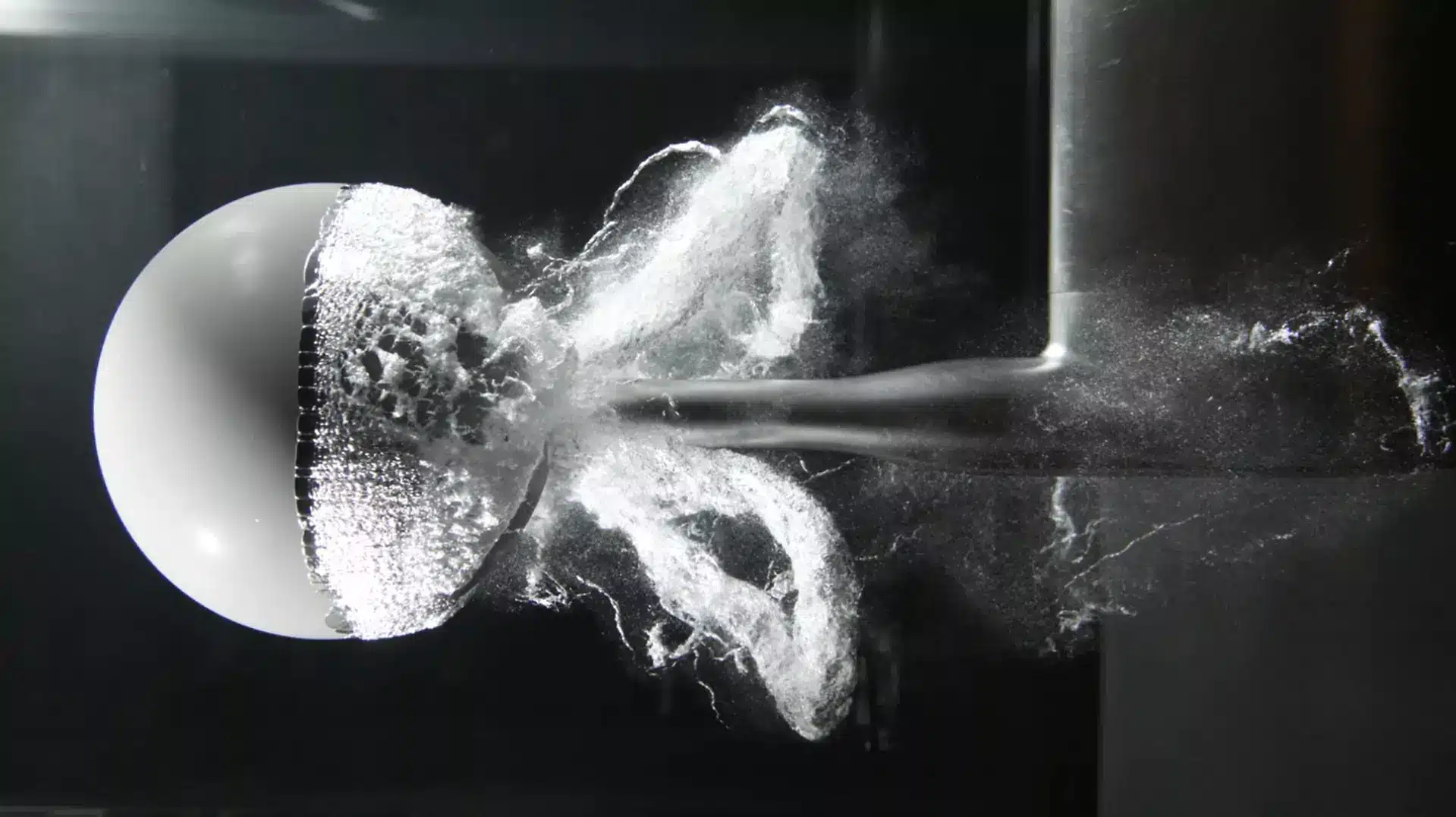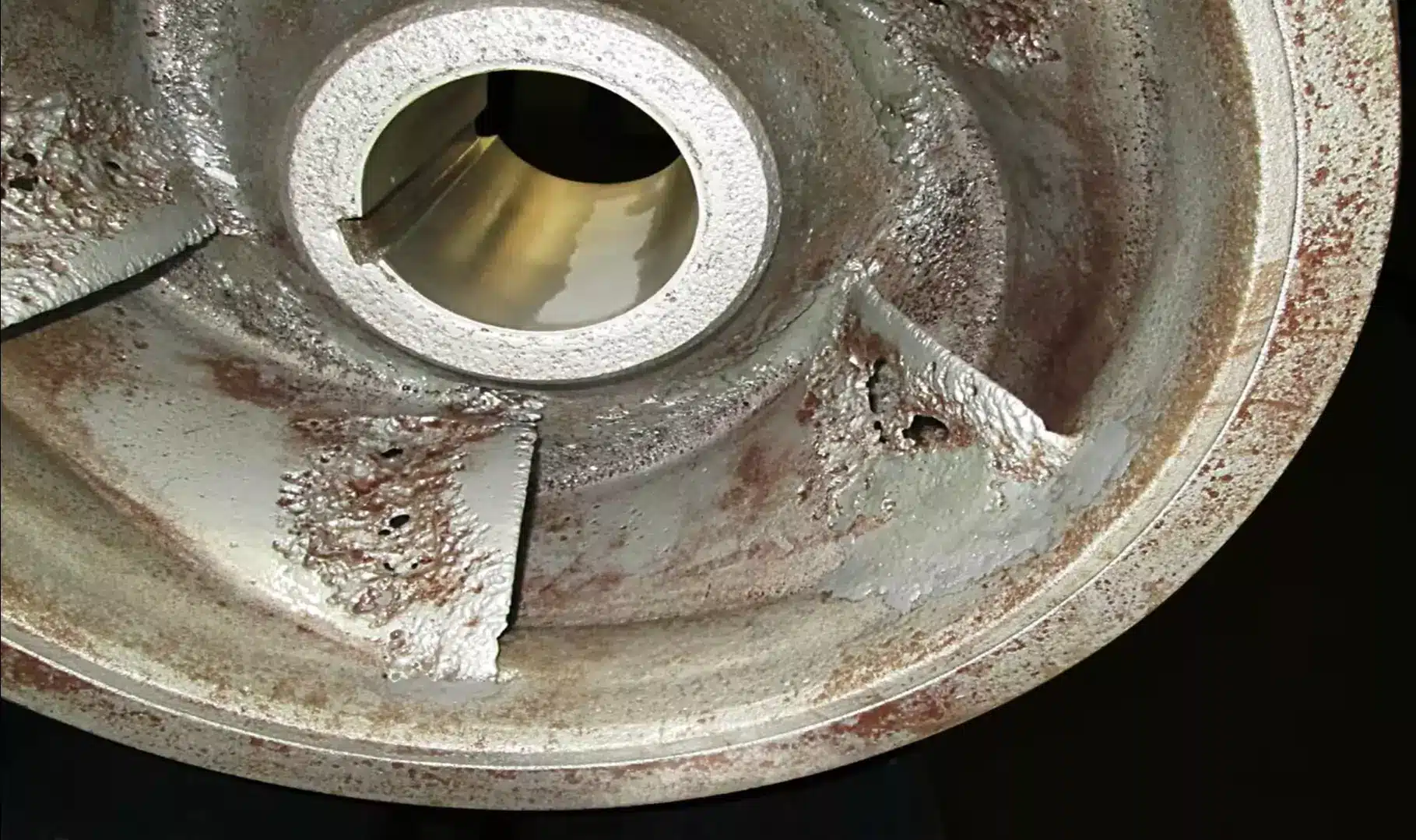
Discover Relevant Articles
Donec varius gravida augue, cecorom semperm molestie tempus. Suspendiss hendrerit aroc neque eget vorsolis.
Cavitation is a common issue in pumps, and it can cause significant damage if not appropriately addressed. This article explains cavitation in centrifugal and positive displacement pumps, its causes and effects, and how to prevent it using simple terminology.
What is Cavitation?
Cavitation happens when small bubbles form in the liquid inside a pump. These bubbles form because the pressure in some parts of the pump drops below the liquid's vapour pressure, which is the point at which a liquid turns into vapour. When these bubbles move to areas of higher pressure within the pump, they collapse or burst. This collapse causes intense shockwaves, significantly damaging the pump's internal components.

Cavitation is often compared to boiling. Imagine water boiling in a kettle; the bubbles that form are vapour bubbles created because the water has reached its boiling point. In a pump, however, the formation of bubbles is caused not by heat but by pressure drops within the liquid.
Causes of Cavitation
Cavitation can occur for several reasons:
If the pump has to lift the liquid from a lower level to a higher level, it can create low pressure on the suction side of the pump. This low pressure can cause the liquid to vaporise and form bubbles.
Example: Imagine drawing water from a well. The higher the water needs to be lifted, the more complex the pump works, potentially causing pressure drops and cavitation.
Example: Imagine drawing water from a well. The higher the water needs to be lifted, the more complex the pump works, potentially causing pressure drops and cavitation.
If something obstructs the pump's inlet, it restricts the liquid flow into the pump, creating a pressure drop that can lead to bubble formation.
Example: Think of a clogged straw. When you suck on it, you create a vacuum that could cause air pockets, similar to how a blocked inlet affects a pump.
Example: Think of a clogged straw. When you suck on it, you create a vacuum that could cause air pockets, similar to how a blocked inlet affects a pump.
Hot liquids have higher vapour pressures, meaning they turn into vapour more easily. When these liquids are pumped, even a slight pressure drop can cause bubbles to form.
Example: Consider a hot cup of tea. It releases steam more readily than a cold drink, illustrating how heat affects vapour pressure.
Example: Consider a hot cup of tea. It releases steam more readily than a cold drink, illustrating how heat affects vapour pressure.
When liquid flows too quickly through the pump, it can create low-pressure areas where bubbles can form. This is often due to the liquid's high-speed movement, which does not allow the pressure to stabilise.
Example: Think of water flowing through a narrow pipe at high speed. The faster it flows, the more likely it is to create turbulence and low-pressure zones.
Example: Think of water flowing through a narrow pipe at high speed. The faster it flows, the more likely it is to create turbulence and low-pressure zones.
Effects of Cavitation

Cavitation can have several detrimental effects on a pump:
Noise
Cavitation often causes a loud, rattling noise. This noise is similar to the sound of gravel or marbles being pumped, created by the implosion of bubbles.
Example: Imagine shaking a can of small rocks. The rattling sound is akin to the noise produced by cavitation in a pump.
Example: Imagine shaking a can of small rocks. The rattling sound is akin to the noise produced by cavitation in a pump.
Vibration
The collapsing bubbles create vibrations that damage the pump and connected piping. If not addressed promptly, these vibrations can lead to mechanical failures.
Example: Think of the vibrations caused by an unbalanced load on a washing machine. The intense shaking is similar to what cavitation-induced vibrations can do to a pump.
Example: Think of the vibrations caused by an unbalanced load on a washing machine. The intense shaking is similar to what cavitation-induced vibrations can do to a pump.
Erosion
Cavitation often causes a loud, rattling noise. This noise is similar to the sound of gravel or marbles being pumped, created by the implosion of bubbles.
Example: Imagine shaking a can of small rocks. The rattling sound is akin to the noise produced by cavitation in a pump.
Example: Imagine shaking a can of small rocks. The rattling sound is akin to the noise produced by cavitation in a pump.
Reduced Performance
Cavitation often causes a loud, rattling noise. This noise is similar to the sound of gravel or marbles being pumped, created by the implosion of bubbles.
Example: Imagine shaking a can of small rocks. The rattling sound is akin to the noise produced by cavitation in a pump.
Example: Imagine shaking a can of small rocks. The rattling sound is akin to the noise produced by cavitation in a pump.
Prevention and Solutions
Preventing cavitation involves addressing its root causes. Here are some strategies:
Reduce Suction Lift
Place the pump closer to the liquid source to minimise the height it needs to lift the liquid. Reducing the suction lift helps maintain higher pressure on the suction side, preventing bubble formation.
Example: If you're using a well pump, lowering the pump closer to the water level can reduce the effort needed to lift the water, preventing cavitation.
Example: If you're using a well pump, lowering the pump closer to the water level can reduce the effort needed to lift the water, preventing cavitation.
1
Ensure Proper Inlet Size
Ensure the pump's inlet is large enough and not blocked to allow a smooth liquid flow into the pump. A proper inlet size ensures a steady flow and prevents pressure drops.
Example: Imagine drinking a thick milkshake using a wider straw. The wider straw allows for better flow, similar to how an appropriate inlet size ensures smooth liquid intake.
Example: Imagine drinking a thick milkshake using a wider straw. The wider straw allows for better flow, similar to how an appropriate inlet size ensures smooth liquid intake.
2
Lower Fluid Temperature
Keep the liquid at a cooler temperature to reduce its vapour pressure. Cooled liquids are less likely to vaporise and form bubbles under pressure drops.
Example: Consider refrigerating a liquid before pumping it. The lower temperature makes it less likely to vaporise, preventing cavitation.
Example: Consider refrigerating a liquid before pumping it. The lower temperature makes it less likely to vaporise, preventing cavitation.
3
Slow Down Flow
Decrease the flow speed of the liquid through the pump to prevent low-pressure areas from forming. Slowing the flow helps maintain stable pressure levels.
Example: Reducing the speed of water flowing through a hose reduces turbulence and maintains a steadier flow, similar to how slowing the flow in a pump can prevent cavitation.
Example: Reducing the speed of water flowing through a hose reduces turbulence and maintains a steadier flow, similar to how slowing the flow in a pump can prevent cavitation.
4
Use a Pump with a Higher NPSH (Net Positive Suction Head)
Selecting a pump designed to handle lower pressure conditions can help prevent cavitation. Pumps with higher NPSH are better suited to maintain the necessary pressure levels to avoid bubble formation.
Example: Imagine using a specialised pump designed for low-pressure conditions in deep wells. Such pumps are built to handle the unique challenges of maintaining pressure and preventing cavitation.
Example: Imagine using a specialised pump designed for low-pressure conditions in deep wells. Such pumps are built to handle the unique challenges of maintaining pressure and preventing cavitation.
5
Conclusion
Understanding and preventing cavitation is crucial for maintaining pumps' longevity and efficiency. By addressing the causes of cavitation and implementing the suggested solutions, you can ensure your pumps operate smoothly and avoid the costly damages associated with this phenomenon.